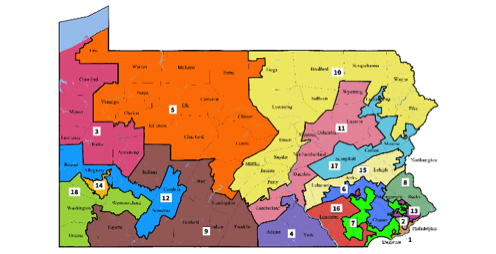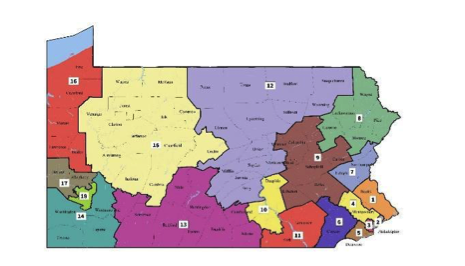On Monday, the U.S. Supreme Court rebuffed a bid by Pennsylvania Republican legislators to reinstate the previous congressional district map that the PA Supreme Court said was unlawfully biased in favor of Republicans.
The high court’s decision was the latest twist in a protracted, partisan fight over Pennsylvania’s Congressional map. Last year, a group of Democratic voters sued in state court over the map, contending that the way the districts had been drawn unfairly favored Republicans. The suit ended up in front of the PA supreme court, which struck down the map, and released a new state electoral map in February.


The reason Pennsylvania GOP legislators are fighting the adoption of the redistricted map is obvious: The new map is seen as giving Democrats a real shot at gaining seats in the U.S. House of Representatives during the midterm elections. Currently, of the 23 seats needed by the Democrats to win the House majority, nine of them could come from Pennsylvania.
“Politicians were choosing who their voters are going to be, instead of voters choosing their politicians,” said Jeffrey Zimmerman, 63, a member of Fair Districts PA, a non-partisan committee that works to create fair redistricting. Zimmerman said that redistricting was necessary to correct the gerrymandering put in place by Republicans, who drew the last congressional map in 2011. That map allowed the GOP to win 12 of the 16 House districts in the the last three congressional elections.
“I consider gerrymandering to be one of the two worst cancers on American democracy,“ said Democrat Congressman Matt Cartwright, who currently represents the 17th district of PA. After the redistricting, he will represent the new 8th district which includes Scranton and other cities in Lackawanna county. “Pennsylvania has proven that un-gerrymandering can happen,” he said. “I think that it will give Pennsylvanians a much better chance at having an even delegation.”

Clearly, some of Cartwright’s Republican counterparts are unhappy with the new congressional map. Representative Brian Fitzpatrick’s (R-PA) chief of staff Michael Conallen, 48, said that Fitzpatrick believed that the state Supreme Court overstepped its bounds and shut out input from local legislators. “It really is the job of the legislature, along with the governor, to draw the maps,” said Conallen. “The Governor drew maps, the Senate drew maps, the House drew maps, Republicans and Democrats drew maps, but the Supreme Court didn’t take any of these.” Instead, he said, the Pennsylvania Supreme Court hired an outside, independent redistricting expert to draw the new congressional map.
Conallen said that Fitzpatrick also feels that redistricting efforts should have waiting until new census data came in—states are redistricted every 10 years after the release of U.S. census, and the data used for the new map is eight years old. However, Conallen said that Fitzpatrick “ultimately accepted the way the map was drawn.”
The first test of the potential impact of Pennsylvania’s newly drawn congressional map will come on November 6, when voters head to polls for the midterm. If the redrawn districts more accurately represent the makeup of the population, there’s a good chance that the Dems can win more than the five House seats (out of a total of 18) they won in the last election.
Email the Author, Jasmin Barmore at jmb1341@nyu.edu